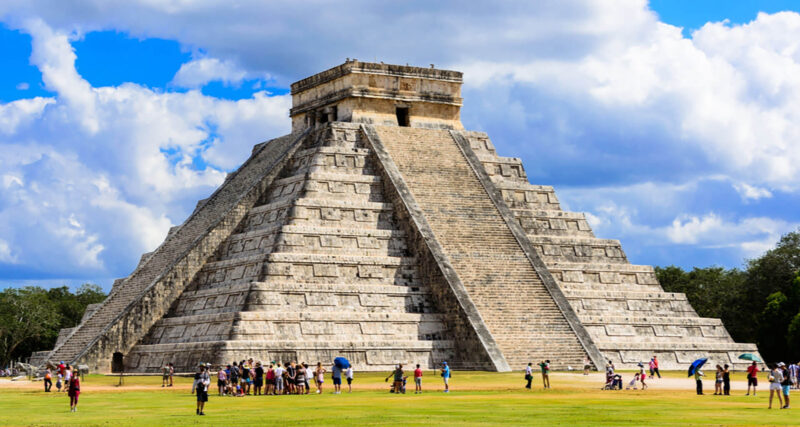Chichen Itza, a large pre-Columbian archaeological site located in the Yucatan Peninsula of Mexico, stands as a testament to the architectural and astronomical prowess of the Maya civilization.
This UNESCO World Heritage Site, renowned for its historical and cultural significance, showcases a variety of structures that provide insights into the ancient Maya way of life. In this article, we will explore the key structures of Chichen Itza and understand their historical and cultural contexts.
El Castillo: The Pyramid of Kukulcan
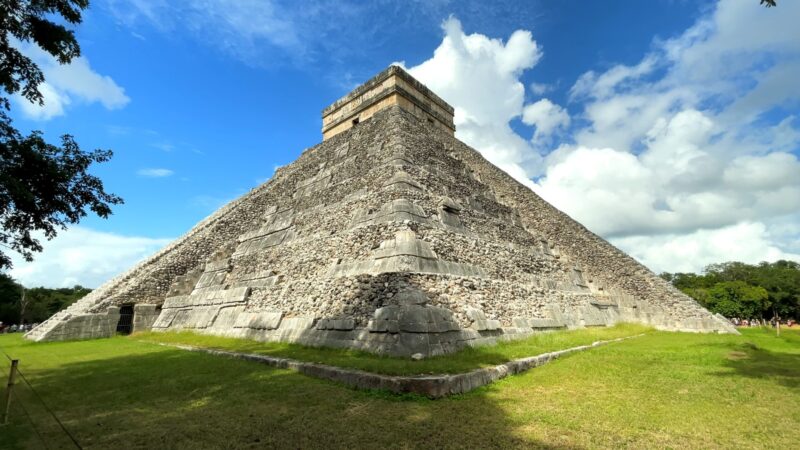
Dominating the landscape of Chichen Itza, El Castillo, also known as the Temple of Kukulcan, is a pyramid that exemplifies the Maya’s architectural, astronomical, and religious brilliance. This four-sided pyramid, rising approximately 30 meters in height, features nine terraces, each representing the nine levels of the underworld in Maya mythology. The pyramid has a total of 365 steps, mirroring the days of the solar year, underscoring the Maya’s advanced understanding of astronomy.
The most mesmerizing aspect of El Castillo is the phenomenon observed during the spring and autumn equinoxes. As the sun sets, the play of light and shadow creates the illusion of a serpent slithering down the northern staircase, symbolizing Kukulcan, the feathered serpent deity. This event attracts thousands of visitors annually, showcasing the Maya’s ability to integrate their architectural skills with astronomical events.
The Great Ball Court: A Game of Life and Death
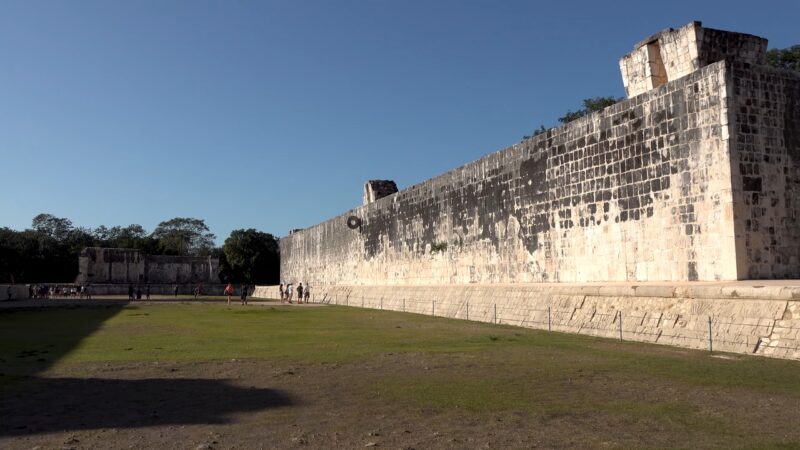
The Great Ball Court of Chichen Itza is the largest and most impressive ball court in ancient Mesoamerica. Measuring about 168 meters in length and 70 meters in width, this court was the site of the Mesoamerican ballgame, which held religious and political significance. The game, played with a rubber ball, involved players using their hips to keep the ball in play, with the aim of passing it through stone hoops positioned high on the court walls.
The walls of the ball court are adorned with detailed carvings that depict scenes from the ballgame, including players in elaborate costumes and scenes of human sacrifice. This is indicative of the belief that the game had connotations of warfare and was closely linked to the themes of life, death, and rebirth.
The Temple of the Warriors: A Monument to Maya Military Might
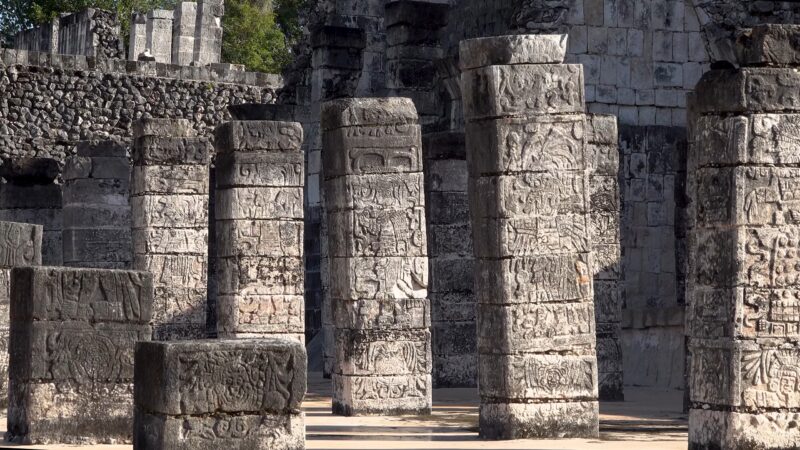
The Temple of the Warriors is another significant structure at Chichen Itza. This large stepped pyramid is flanked by rows of carved columns depicting warriors in relief, signifying the military power and prowess of the Maya. Atop the pyramid is a temple adorned with more carvings and sculptures, including representations of Chac Mool, a figure associated with human sacrifice.
The temple serves as a reminder of the Maya’s military strength and their practice of capturing and sacrificing warriors from rival city-states. The detailed carvings provide insights into the armor, weapons, and rituals associated with Maya warfare.
The Sacred Cenote: Gateway to the Underworld
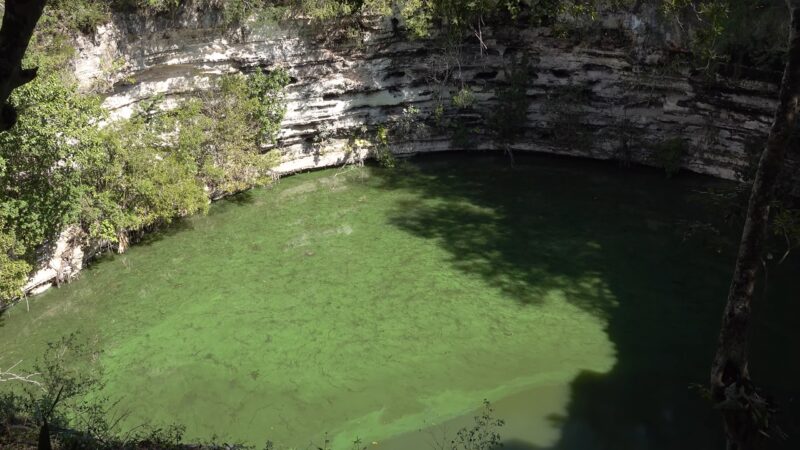
The Sacred Cenote, also known as the Well of Sacrifice, is a natural sinkhole located to the north of Chichen Itza. The Maya considered cenotes to be gateways to the underworld and used them for religious ceremonies, including offerings to the gods. The Sacred Cenote, in particular, was used for rituals involving human sacrifice, as evidenced by the discovery of human remains and precious objects like gold, jade, and pottery.
The cenote’s role in Maya religious practices highlights their belief in the interconnectedness of the natural world and the divine, as well as their understanding of the cenote’s significance in their water-scarce environment.
The Observatory: El Caracol
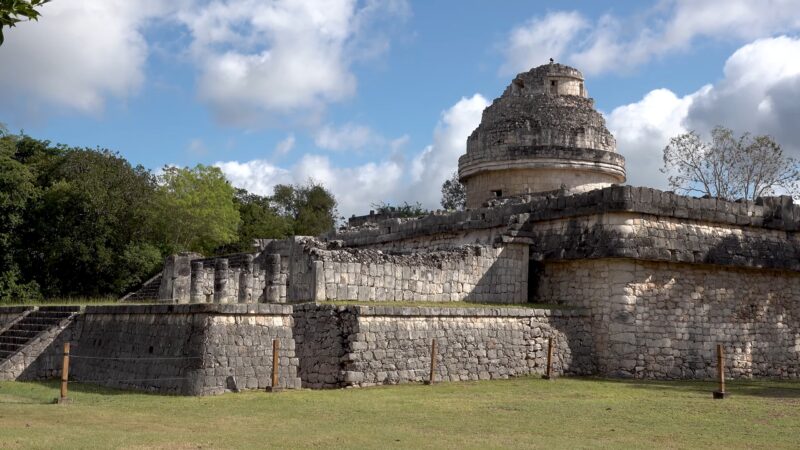
El Caracol, known as the Observatory, is a unique structure at Chichen Itza that stands as a testament to the Maya’s advanced understanding of astronomy. The circular building on an elevated platform is believed to have been used for astronomical observations. Its windows and doors align with astronomical events, including the appearances of Venus and the solstices.
This structure underscores the importance of astronomy in Maya culture, which influenced their agricultural practices, religious ceremonies, and the construction of their cities.
The Nunnery Complex: A Hub of Civic Life
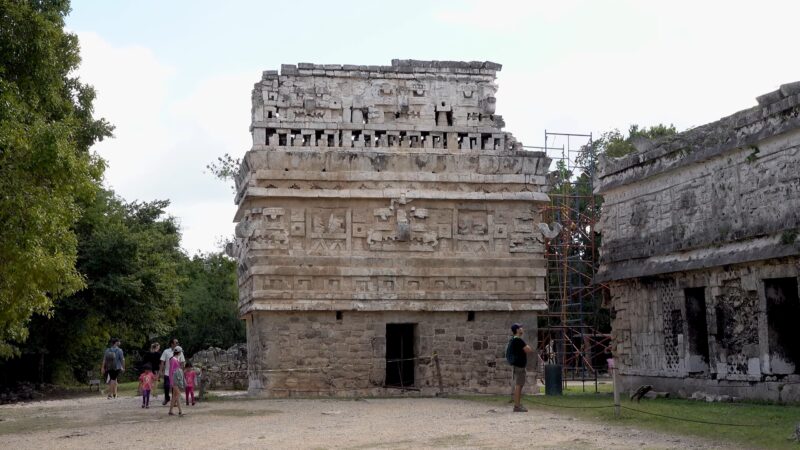
The Nunnery Complex, a collection of buildings to the east of El Castillo, served as a hub for civic and religious activities. The name, given by Spanish conquerors, reflects a misunderstanding of the complex’s original purpose, which was likely administrative rather than monastic. The buildings are adorned with intricate carvings and sculptures depicting gods, animals, and mythological scenes.
The Nunnery Complex provides insights into the social and administrative structures of the Maya, highlighting their sophisticated urban planning and architectural skills.
FAQs
Were there any residential areas for ordinary people in Chichen Itza?
Yes, Chichen Itza did have residential areas for its inhabitants. These areas, often overlooked by tourists, were situated outside the ceremonial center. They typically consisted of smaller platforms and structures made from perishable materials. These residential zones provide insights into the daily life of the Maya populace, including their domestic practices and social organization.
How did the Maya source the materials for building Chichen Itza?
The Maya primarily used locally sourced limestone for constructing Chichen Itza. This stone was abundant in the region and was quarried nearby. The Maya craftsmen shaped these stones using stone tools and then transported them to the construction sites. Other materials like wood and stucco were also used for roofing and decorative purposes.
Is there any evidence of influence from other Mesoamerican cultures at Chichen Itza?
Yes, Chichen Itza shows influences from other Mesoamerican cultures, especially the Toltec. This is evident in the architectural styles and iconography, such as the use of columns and serpent motifs, which were not typical of earlier Maya architecture. These influences suggest a period of cultural exchange and possibly conquest.
Were there any specific religious ceremonies held at Chichen Itza?
Beyond the well-known equinox events at El Castillo, Chichen Itza was the site of various religious ceremonies. These included rituals for rain, fertility, and agricultural cycles. The Sacred Cenote was particularly significant for offering ceremonies, where valuable items and human sacrifices were offered to the gods to ensure prosperity and balance.
How was Chichen Itza organized as a city?
Chichen Itza was organized with a clear urban planning scheme. The ceremonial center, with its major temples and pyramids, was at the heart of the city. Surrounding this were administrative and residential areas. Roads, known as sacbeob, connected various parts of the city and to other sites in the region, indicating a highly organized urban layout.
Are there any lesser-known structures in Chichen Itza that are of interest?
Besides the well-known structures, Chichen Itza has several lesser-known yet intriguing buildings. For instance, the Las Monjas complex has intricate carvings that provide insights into the Maya’s cosmology. The Red House (Casa Colorada) contains hieroglyphic inscriptions, offering valuable information about the history and chronology of Chichen Itza. These structures, though not as famous, contribute significantly to our understanding of Maya culture.
Final Words
Chichen Itza’s structures are not merely architectural feats; they are a window into the complex society, beliefs, and knowledge of the ancient Maya. Each building and each carving tells a story about how the Maya viewed the world, their gods, and their place in the universe.
These structures stand as enduring symbols of the Maya’s astronomical knowledge, religious practices, and social organization. As we continue to study and preserve these magnificent ruins, we gain a deeper appreciation for the rich and sophisticated culture that once thrived in the heart of the Yucatan Peninsula.

